
Due to the unique terrains, such as canyons, cliffs, and wind gaps, and an elevation drop of 3,600 meters, the area of Yushan National Park has distinct climates, warm, temperate and cold, and a variety of habitats breeding rich plant species. It may cover only 3% of Taiwan's land area, but has more than half of Taiwan's native plants. The combination of geographical location and elevation changes offers the view of subtropical vegetations and other plants only seen in countries located more north in latitude.
The area can be divided into five main vegetation belts, and they are alpine vegetation, fir forests, hemlock and spruce forests, oak forests, and castanopsis. The oak forests are within the mountain areas with plenty of clouds and fogs. The areas with the thickest clouds and fog often have cypress trees endemic in Taiwan, and the forest belt covers most of the park. The 2019 statistics show that there are 475 species of monocots, 1,580 species of dicots, 27 species of gymnosperms, 433 species of ferns, 230 species of mosses and 147 kinds of fungi, displaying the capability of different forest communities nurturing complex and rich flora.
Alpine vegetation belt
This vegetation belt is mainly distributed at an elevation of more than 3,600 meters. The diversity of plants and environmental factors leads to the nurturing of tundra plants and Yushan juniperus morrisonicola.
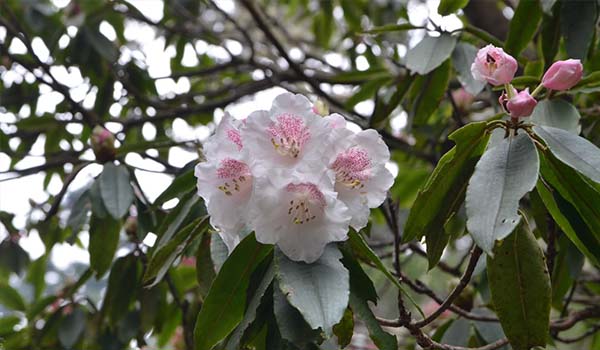

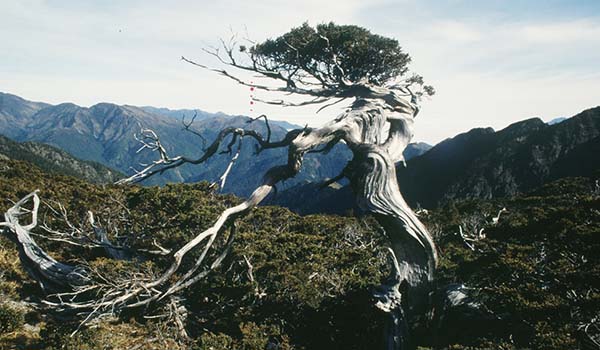

Fir forest belt (coniferous forest)
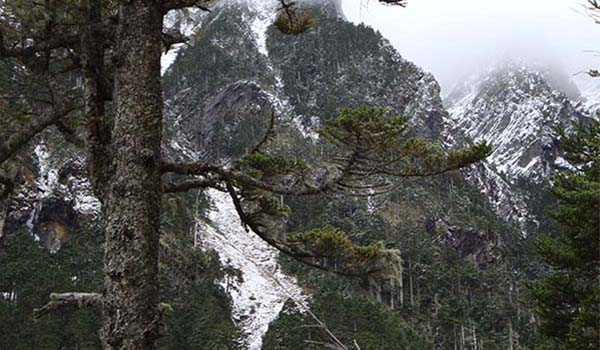
Taiwan White Fir
Distributed at an elevation of between 3,100 and 3,600 meters right under the alpine vegetation belt. It is near the top of a mountain ridge and exposed to extreme solar radiation. Yushan juniper trees are located on the upper part of the belt, and the lower part is mixed with some hemlock trees. Typical pure fir forests with straight and towering tree trunks. The area is mixed with some withered white woods, and the lower part is covered with densely grown Yushan canes.
Hemlock-spruce forest belt (coniferous forest)
Mainly distributed at an elevation of between 2,500 and 3,100 meters, hemlock and spruce forests are the representing species. These two forest types can be distributed down to an elevation as low as 2,300 meters. However, the area is often mixed with a large number of broadleaf species and is not considered pure forests. The succession of this vegetation belt also brings in Formosan alder and Taiwan red pine.
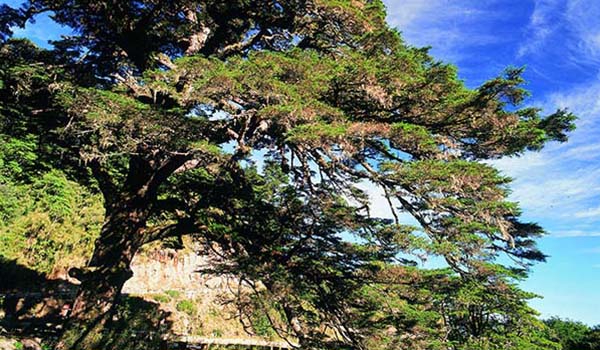

Oak forest belt

Chamaecyparis formosensis
This belt is often surrounded by clouds and fog and located on wet slopes, so trees here tend to be exposed to diffused light. There are evergreen broadleaf forests composed of lauraceae and fagaceae families and coniferous forests composed of cypress trees, and there are also broadleaf and mixed forests. The sunny slopes and early succession part of the belt also have many other unique forests, forming a complex mosaic look.
Castanopsis forest belt (evergreen broadleaf forests)
The belt area is located at an elevation between 1,500 meters and 500 meters. There are castanopsis and phoebe zhennan forests, and both are located under the cloud forest belt.
| Vegetation zone | Climate zone | Elevation (meters) | Major representative plants |
|---|---|---|---|
| Alpine vegetation | Sub-Frigid zone | >3,600 | Yushan junipers and rhododendron, herbaceous plants |
| Fir forest belt | Cold-temperate zone | 3,100-3,600 | Abies kawakamii |
| Hemlock-spruce forest belt | Cool-temperate zone | 2,500-3,100 | Taiwan hemlock, Chinese white pine, Taiwan red pines, Taiwan spruce, and quercus semecarpifolia |
| Oak forest belt | Temperate zone | 1,500-2,500 | Chamaecyparis formosensis, Chamaecyparis taiwanensis, Taiwania cryptomerioides Hayata, Taiwan cunninghamia, taxus chinensis, reddening maple, acer serrulatum, acer kawakamii, wild walnut, Alishan elm and others. |
| Machilus-castanopsis zone | Subtropical zone | 500-1,500 | Pseudotsuga wilsoniana, calocedrus formosana, machilus pseudo longifolia, machilus kusanoi and Phoebe formosana. |
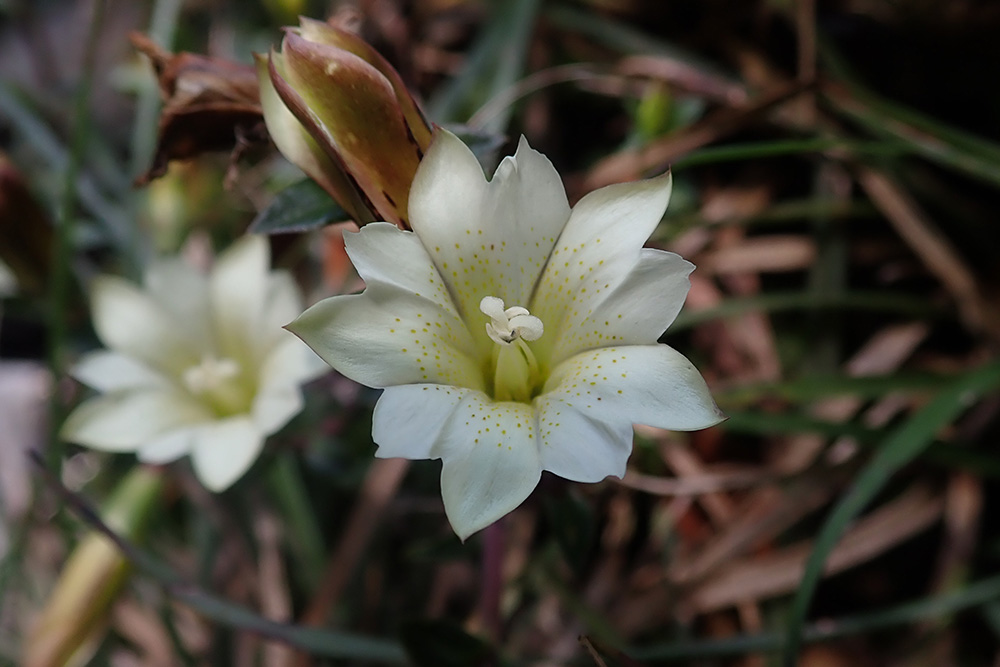
Gentiana scabrida
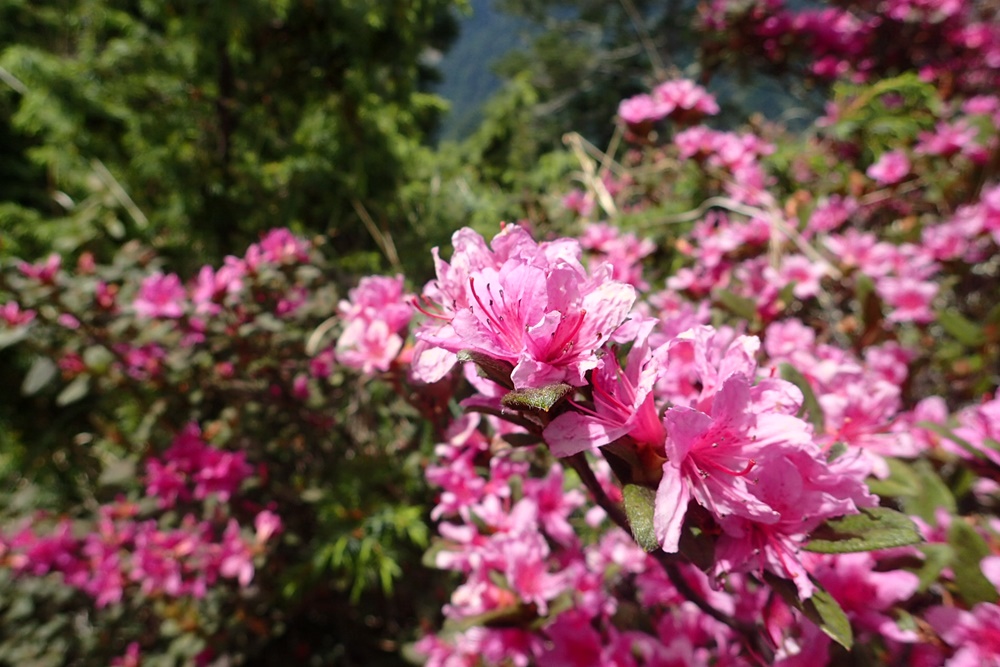
Rhododendron rubropilosum rubropilosum
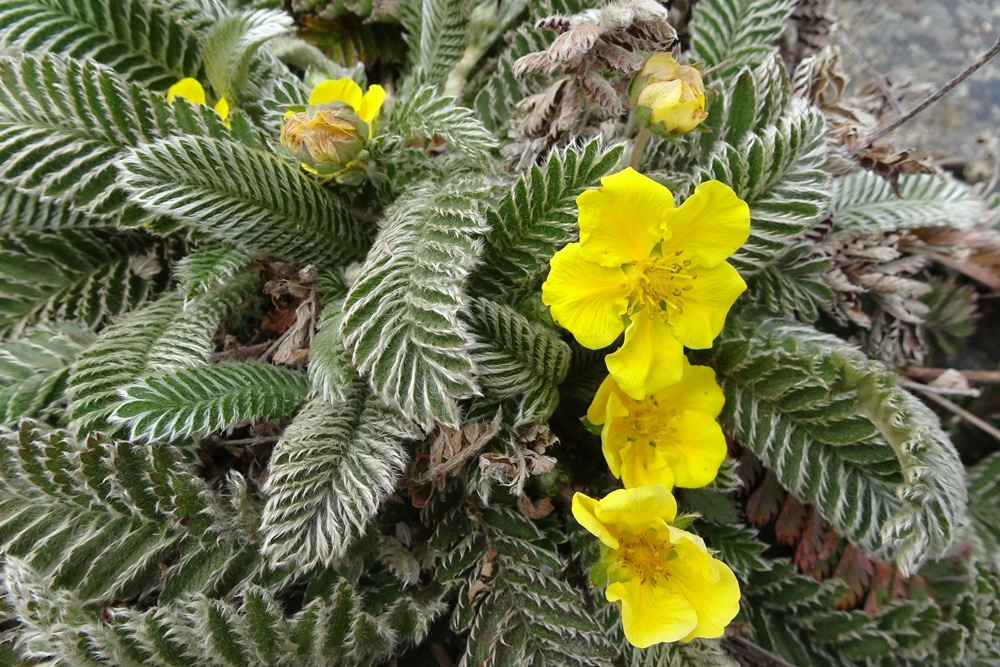
Potentilla tugitakensis
